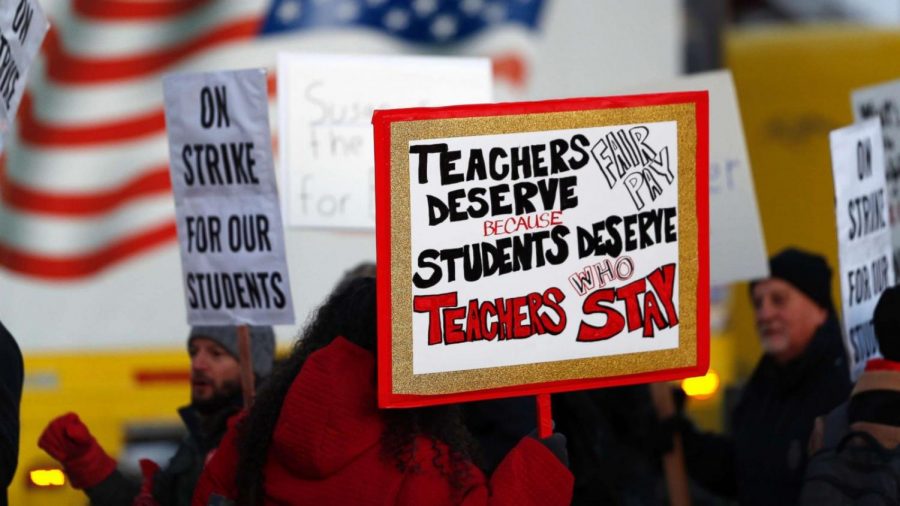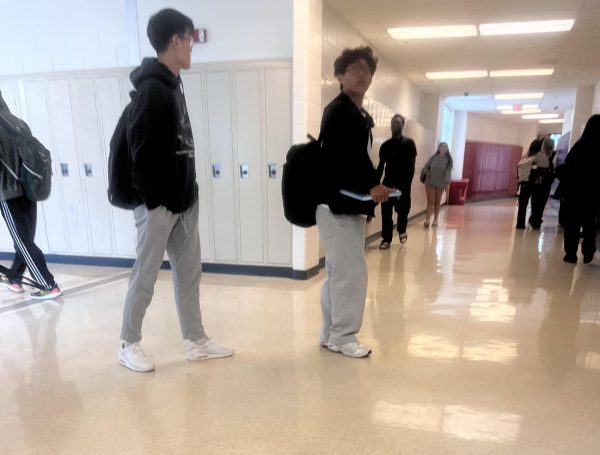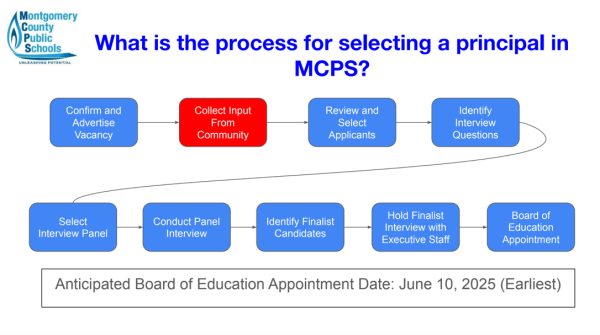Low stipends leave teachers questioning their value in MCPS
Photo used with permission from Google Commons
Thousands of public school teachers are fighting for fair pay and higher stipends all around America and here in Montgomery County.
Across the board, Montgomery County Public Schools are experiencing staffing shortages in coaching, advisors, department heads, sponsors and production managers. Over the decades there’s been little incentive to take on these roles and it’s recently reached an all-time high. Currently, a teacher can make more money working a part time job at Starbucks than becoming a team coach in Montgomery County.
MCPS offers stipends for teachers and faculty who take on roles beyond teaching and offers them an hourly rate of approximately $15, which hasn’t changed in 25 years. Twenty-five years ago the pegged price of $15 was appropriate but in current days, it falls short of reality and the cost of living in this district.
Montgomery County Education Association (MCEA) is a teacher-led union that works to foster community amongst teachers and successfully respond to the needs of educators. MCEA is part of the National Education Association (NEA), a nationwide union. Currently MCEA is working on contracts and negotiations regarding the stipend hourly rate of $15 and the inaccurate representation of hours worked.
When the stipends were set in 1997, the minimum wage was $5.15. Twenty-five years later, the stipends have remained the same but the minimum wage has increased to $15.65 in Montgomery County. The set stipend was 2.9 times the minimum wage, if the stipend increased with the minimum wage, the hourly rate should be $45.38 an hour.
Not only has the rate remained the same despite major inflation, but, the way clubs and sports have evolved over the past 25 years does not do justice to the calculations the county set numerous years ago. Sports in the late ‘90s did not require as many hours as it does today. Poms used to practice three times a week for only an hour. Now, poms practice up to six times a week with two hour practices. Poms also used to be a one season sport, only performing at football halftime games, but now it is a two season sport with their own competitions in the winter. Poms requires numerous undocumented hours. Poms coaches have to choreograph, make music, attend competitions and football games, organize spring and summer workouts and engage in time-consuming administrative tasks throughout the year.
Poms coach Mia Krawczel is working with other poms coaches in Montgomery County to reevaluate poms stipends. “I remember when I first saw my pom stipend compared to the other coach stipends and I was confused why it was almost half of some one-season sports while poms is a two-season sport. I think it was more surprising to see that pom coaches get paid for 2-3 practices per week, an hour per practice. We also don’t get paid for invitationals and county competitions, which we are required to be at,” Krawczel said.
In 1997, the stipends for sports were not created equitably. Football and cheer both attend every football game and practice for about three hours on school days. The current set stipends as extremely disproportionate and favored towards football coaches. Football receives one head coach and three assistant coaches, all set with stipends. Cheer receives two paid coaches but other less recognized sports are forced to ask for unpaid volunteers for assistant coaches. Cheer’s stipend only includes inaccurate hourly practice times and cheering for football games. The cheerleading team is meant to cheer at a minimum of one varsity game for every sport, and those hours are not included in the coaching stipend. Cheer also competes in three competitions in the fall, which are also not included. A football head coach makes $6,245 and assistant coaches make $5,384, compared to a cheer coach making only $2,403.
Any teacher is able to join MCEA. This union operates in a three year contract and Covid-19 dismissed the last negotiation cycle. Now that we are back in person, this union has been conducting a study to re-evaluate the stipends. Their goal is to fix the gap of unfilled extra-curricular positions. They want to incentivize and reward teachers to take on more roles, rather than just teaching, by recalculating all of the stipends to what they would be if they were equitable.
Dominique Parker teaches AP English Literature and honors English 11 and also sponsors mock trial, while also being an active member of MCEA. She believes that teachers’ most valuable commodity is time and they do not have enough of it. She argues that teachers who are willing to give up some of their time to do an activity should be rewarded rather than undervalued and unacknowledged through the low stipends. “It is almost as if MCPS expects teachers to sponsor and coach as favor without regard to how much time it takes,” Parker said.
Parker was drawn to this task in MCEA because she felt the assumptions and biases for the amount of time and effort extra-curricular activity leaders put into after school activities are unjust. MCEA discovered the hours the county tallied 25 years ago is a gross underestimate of what the hours are today. “You almost have to ignore the stipends when signing up to be a sponsor. It’s more about helping the children because I know the stipends are little to nothing,” Parker said.
It is hard to fill the void of participation in young, new teachers without paying them. If Montgomery County wants to encourage teachers to participate, they are going to have to pay them. Young teachers often start by taking on these responsibilities and quickly realize the pay description doesn’t do the job justice. It results in lack of retention rates. leaving many activities with new sponsors each year. “I feel the need to step up year after year because if I don’t, I would feel guilty depriving students of activities that they enjoy just because there is no teacher sponsor,” Parker said.
A low pay rate for positions is not just a problem in high school; there are activities in middle and elementary schools that get paid nothing at all. The middle school yearbook committee adviser gets paid nothing and teachers have to volunteer their time every year. Many teachers in primary and secondary education are doing prolonged tasks for free.
MCEA presented its initial proposal on Oct. 18 to the Board of Education. MCEA realized the financial proposal to MCPS would require the County Council to allocate tens of millions more dollars to the stipends, making it likely for the Board to return with a lower rebuttal. The new hourly rate MCEA proposed is $40 an hour.
Montgomery County is supposed to be the jewel of Maryland public schools. All 25 Montgomery County public schools earned spots on the 2021 Best High Schools list, published by U.S. News & World Report. Specifically, two MCPS high schools have made the top 200 of U.S. News & World Report’s 2022 ‘Best U.S. High Schools’ rankings. Walt Whitman High School ranked 104 and Thomas S. Wootton High School ranked 167 nationally. MCPS has received high rankings nationally, and in order to keep those rankings, the Board of Education has to be willing to pay for the services teachers provide. Quality education doesn’t happen by accident: It happens with recruitment and retention in extracurricular activity leaders, creating excitement for students to broaden their palates and go beyond academics.
Your donation will support the student journalists of Thomas S. Wootton High School. Your contribution will allow us to purchase equipment and cover our annual website hosting costs.
Julia is a 2023 graduate.







